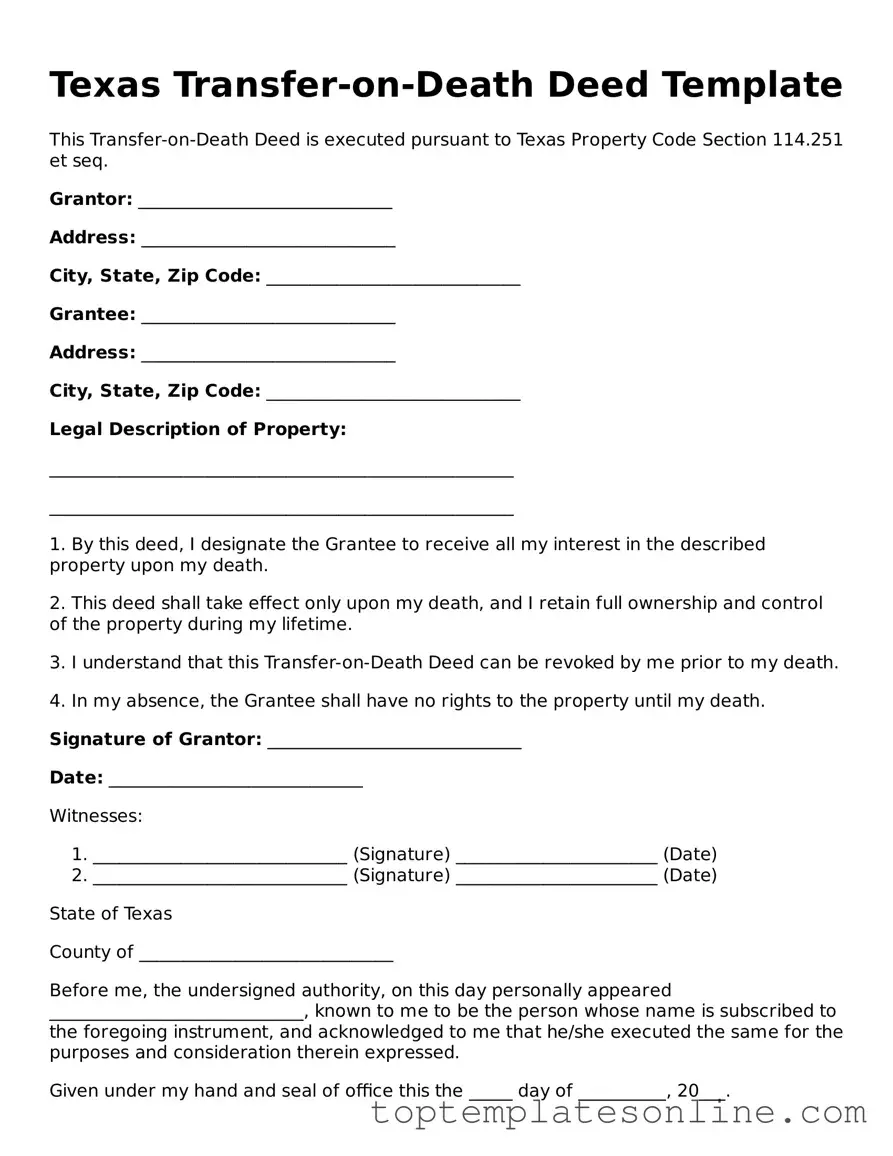Blank Transfer-on-Death Deed Template for Texas State
The Texas Transfer-on-Death Deed form is a legal document that allows property owners to designate beneficiaries who will receive their property upon their death, without the need for probate. This straightforward process can simplify the transfer of real estate, ensuring that your loved ones inherit your property seamlessly. Understanding this form can empower you to make informed decisions about your estate planning.
Customize Transfer-on-Death Deed Here
